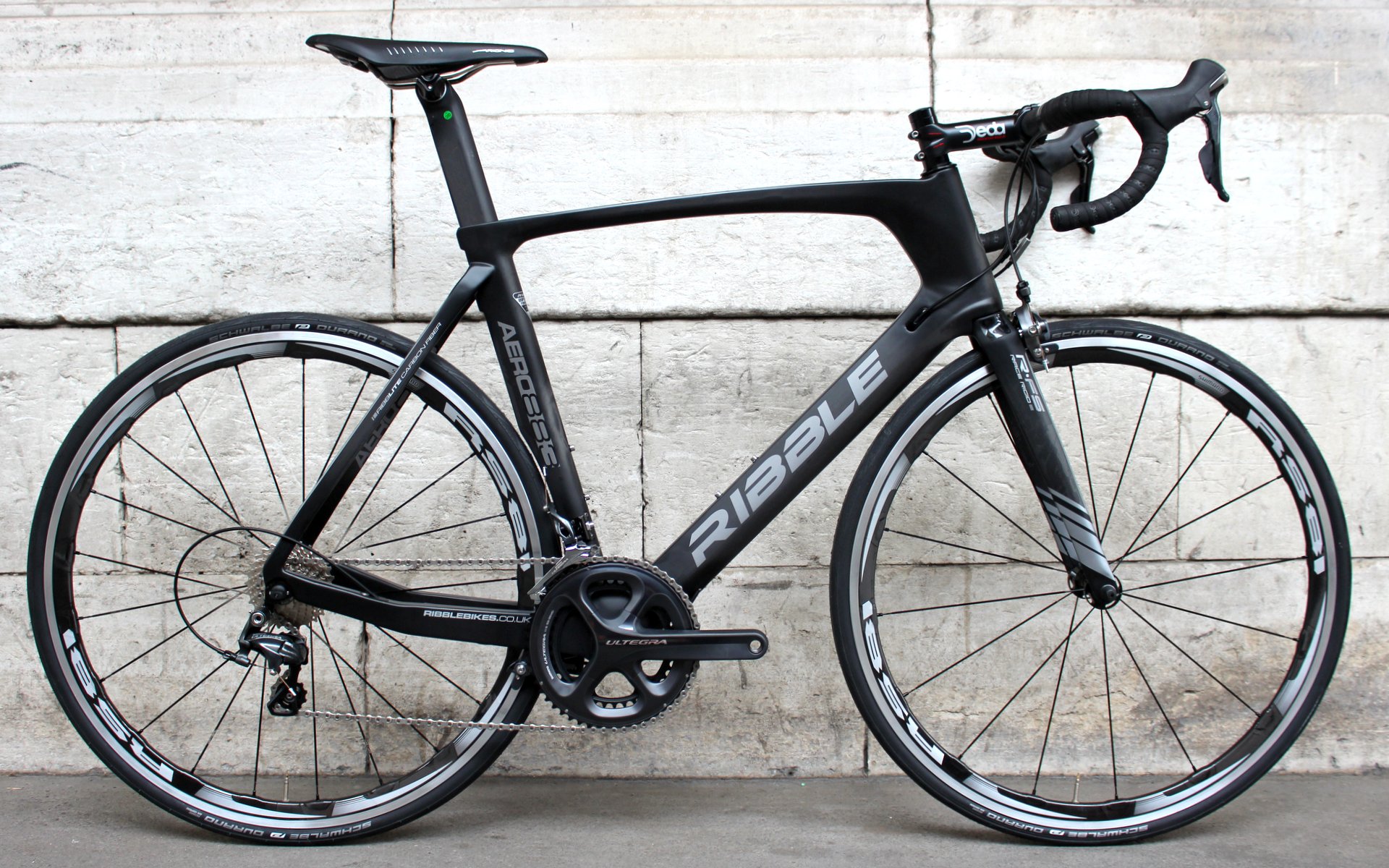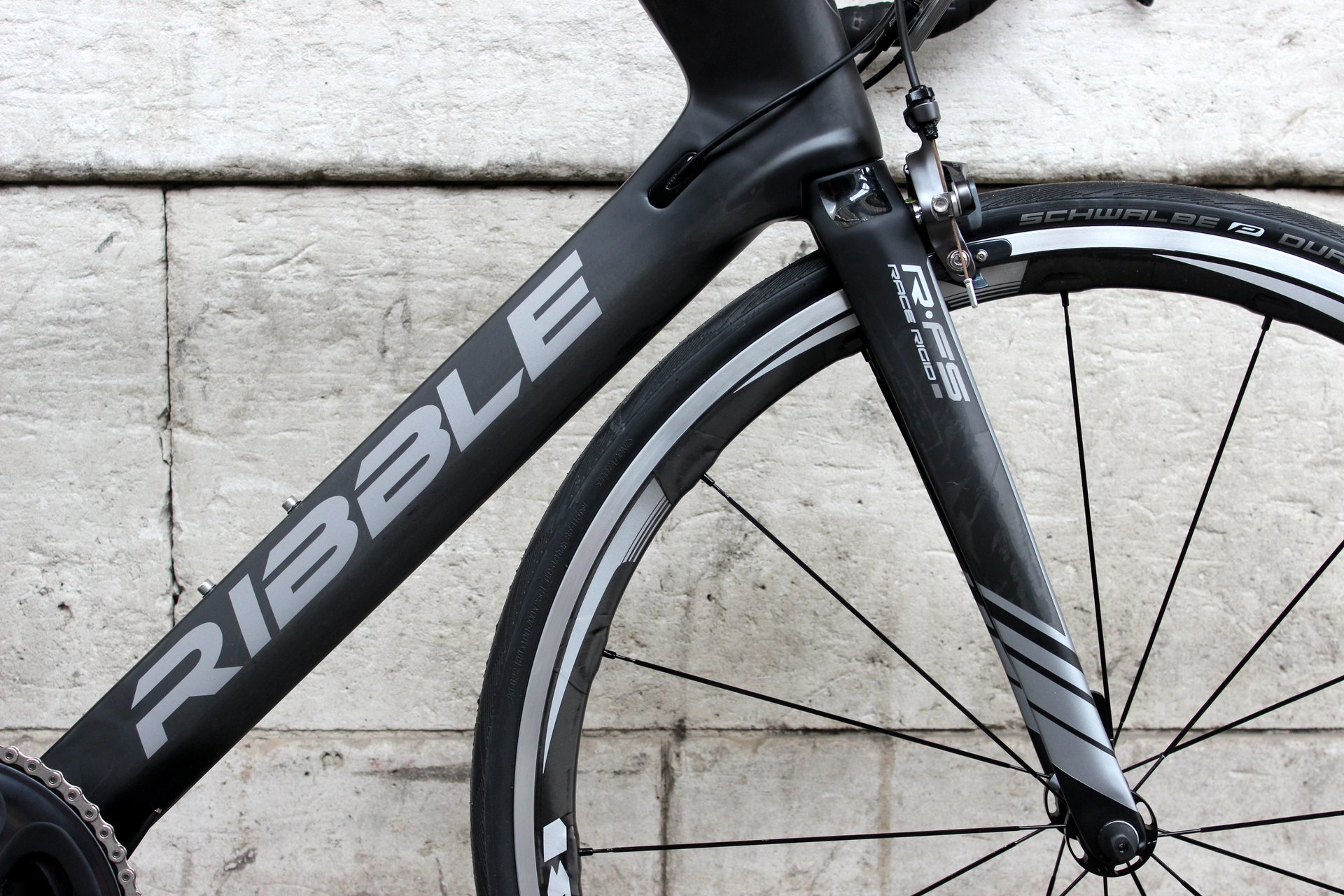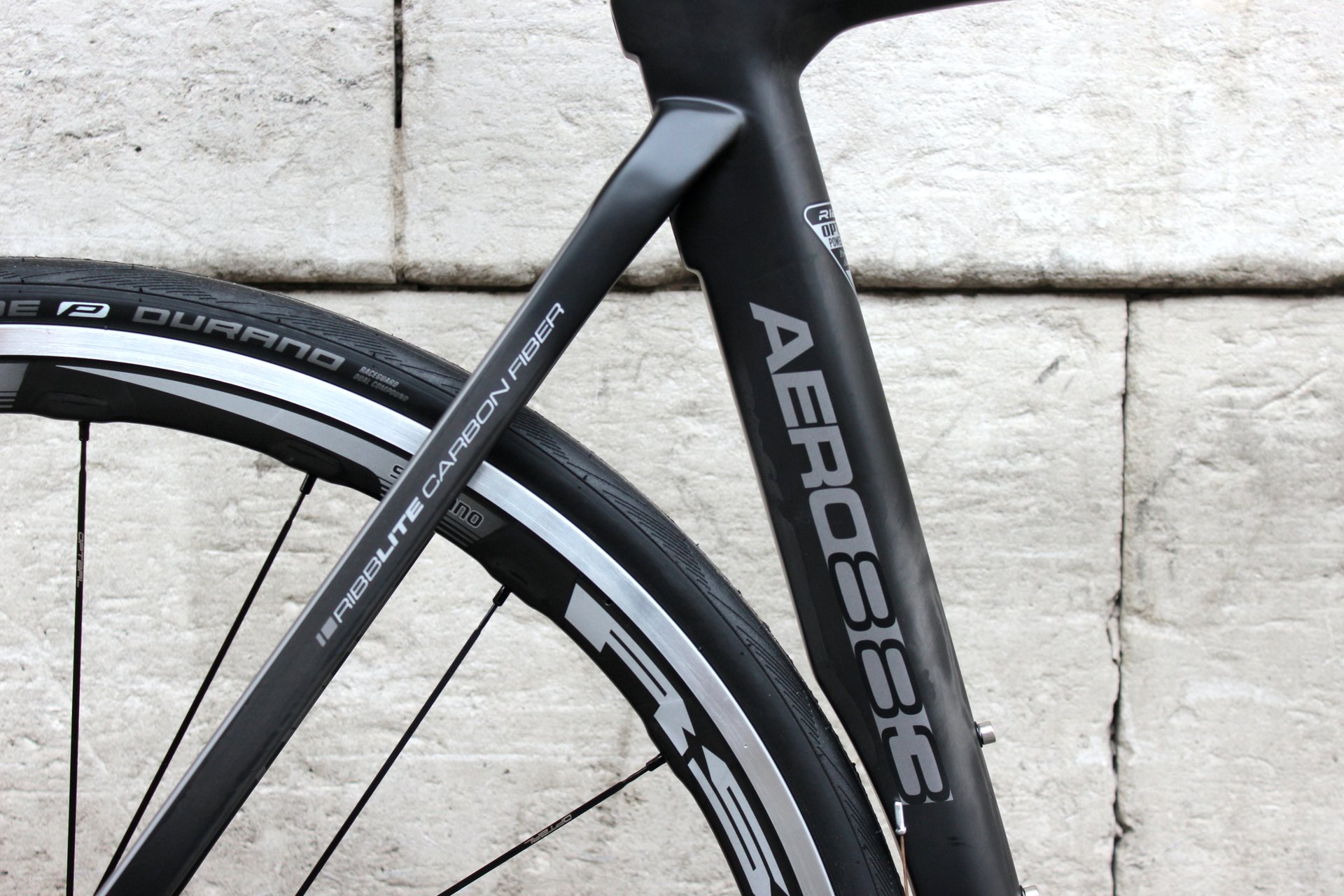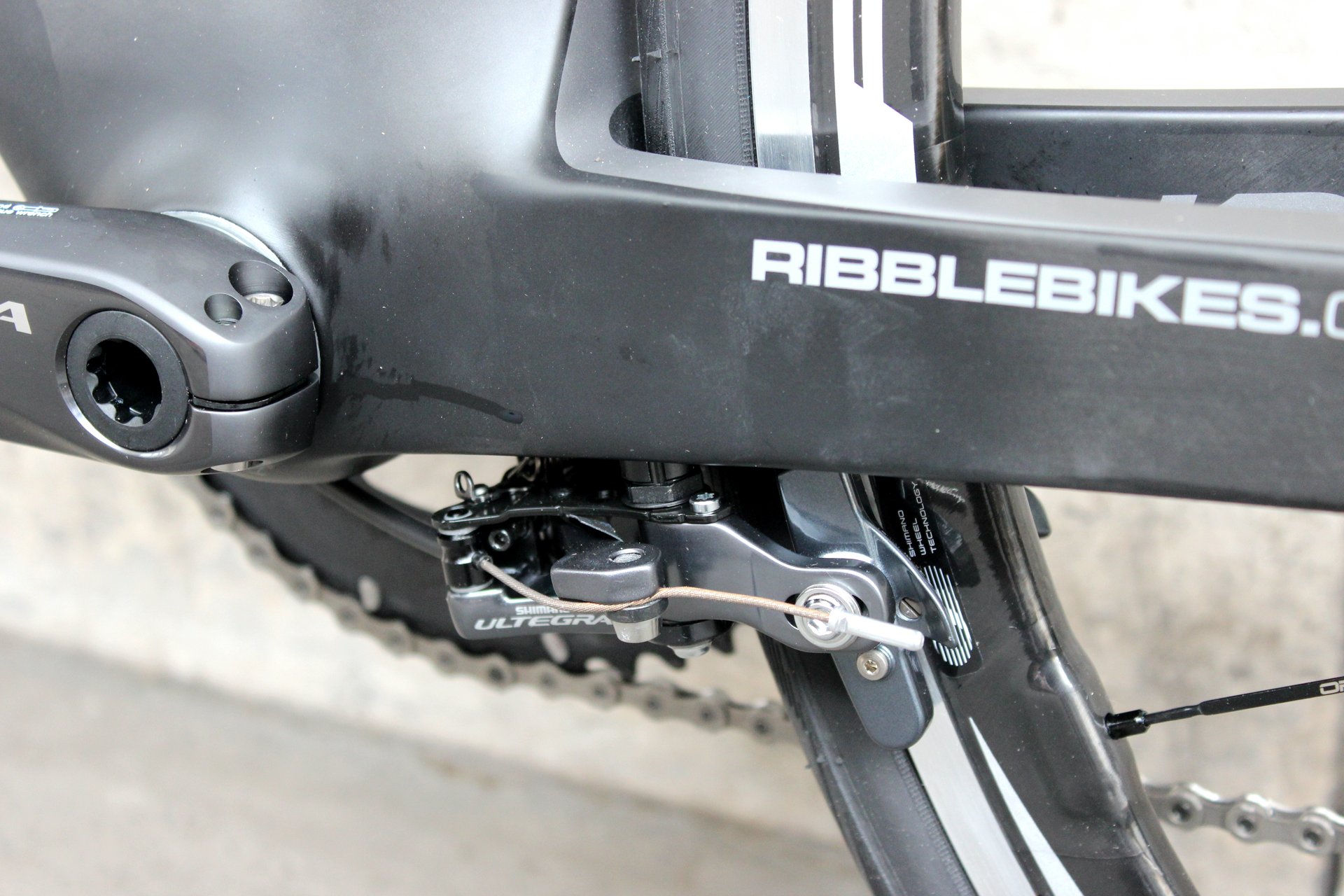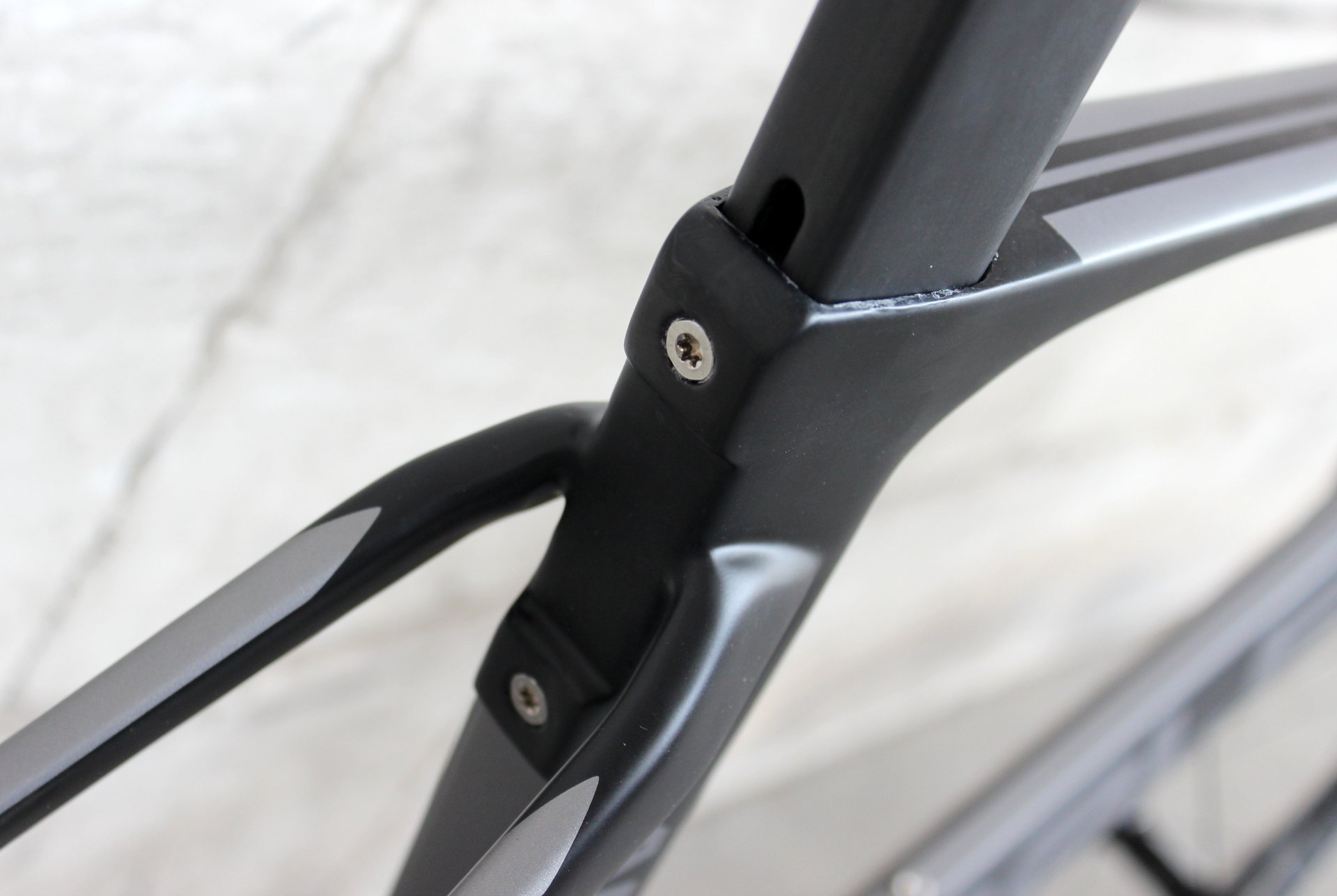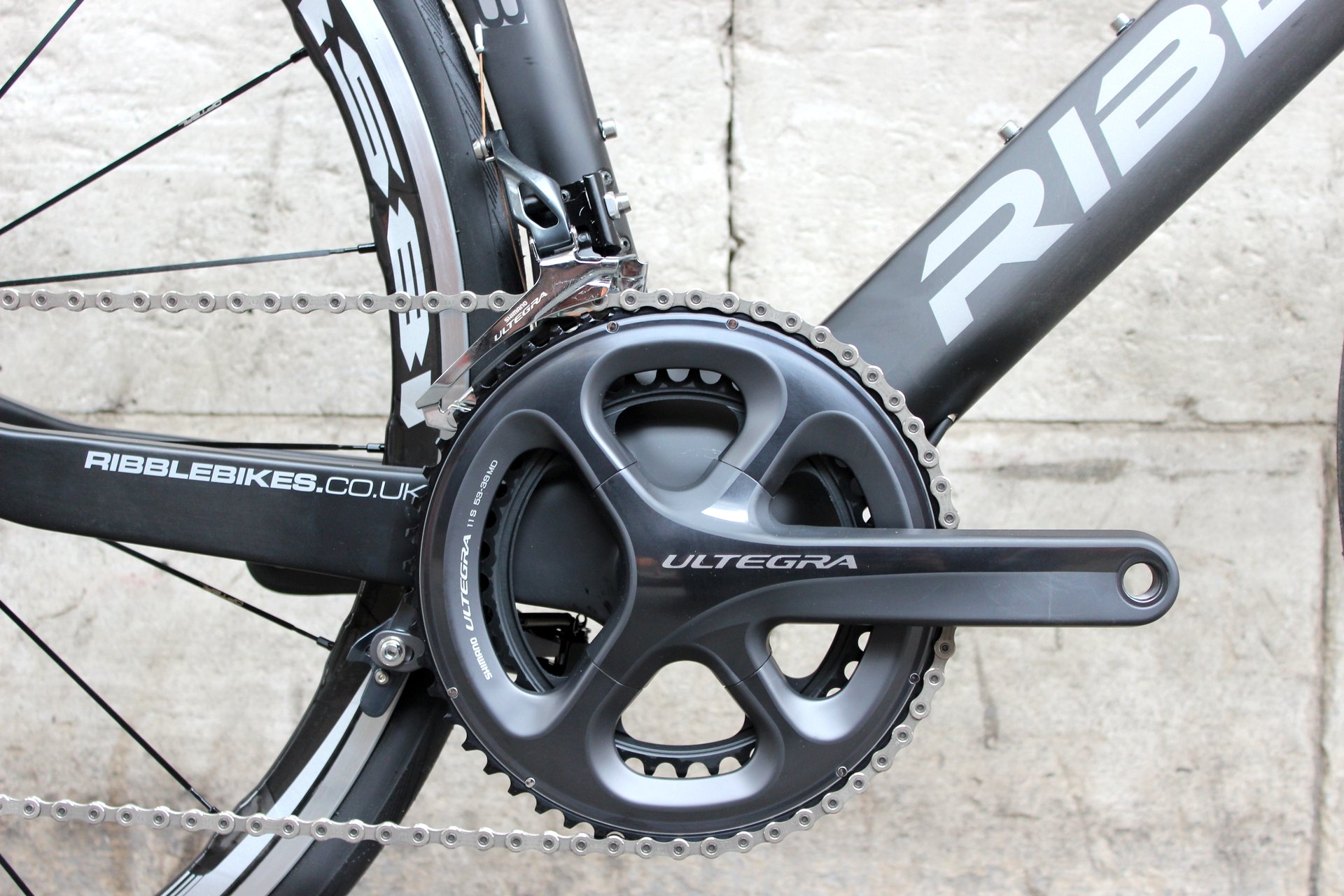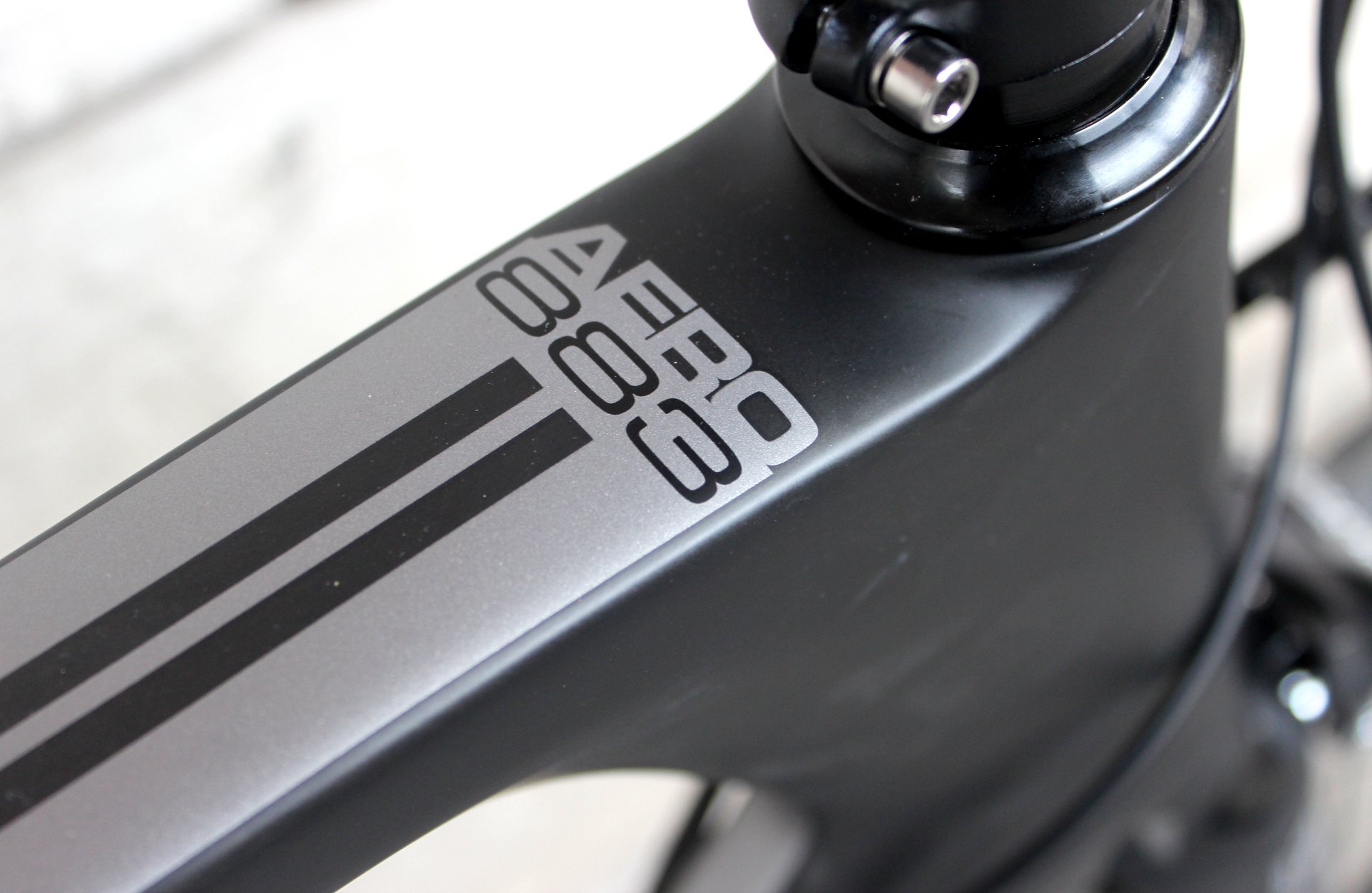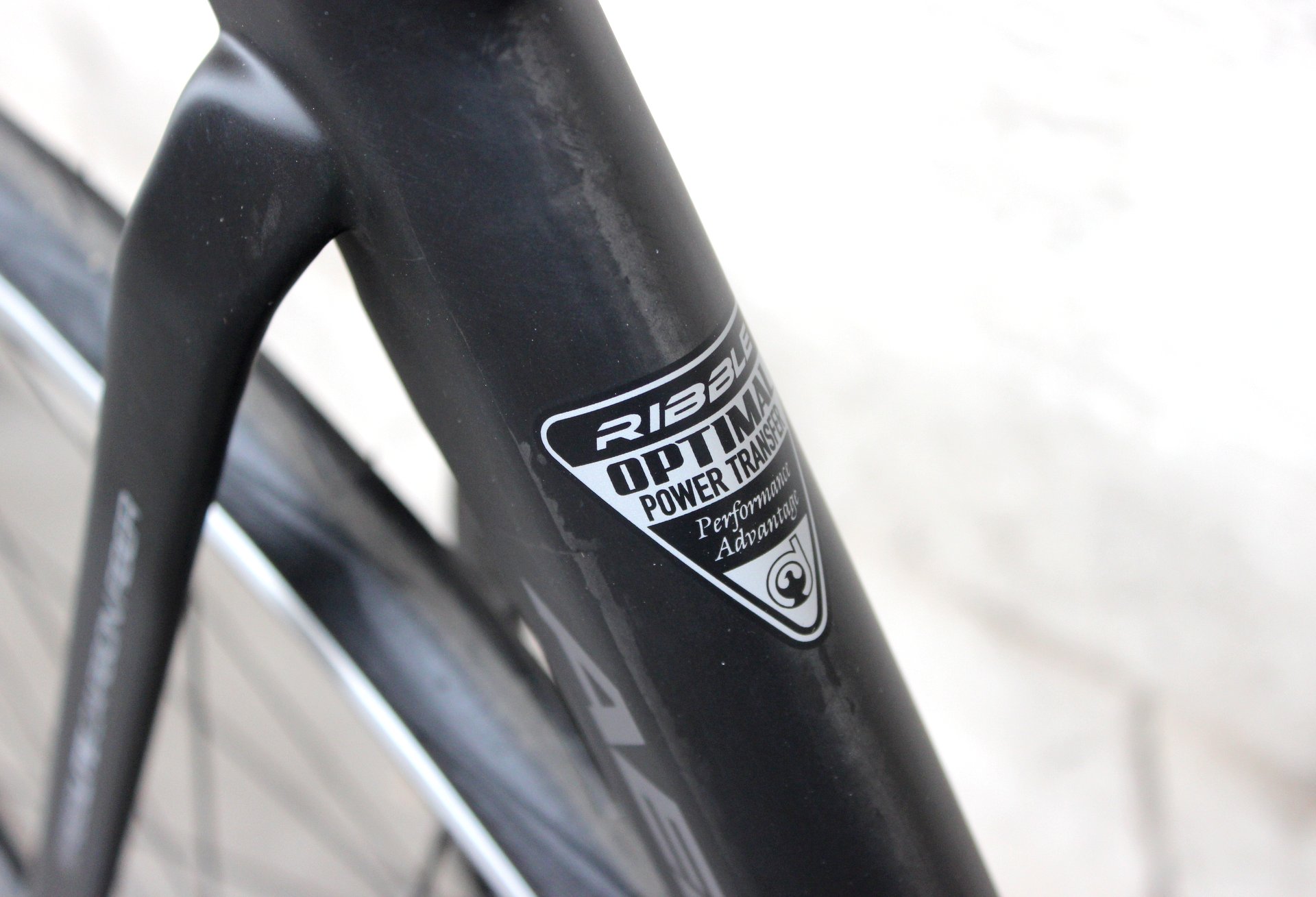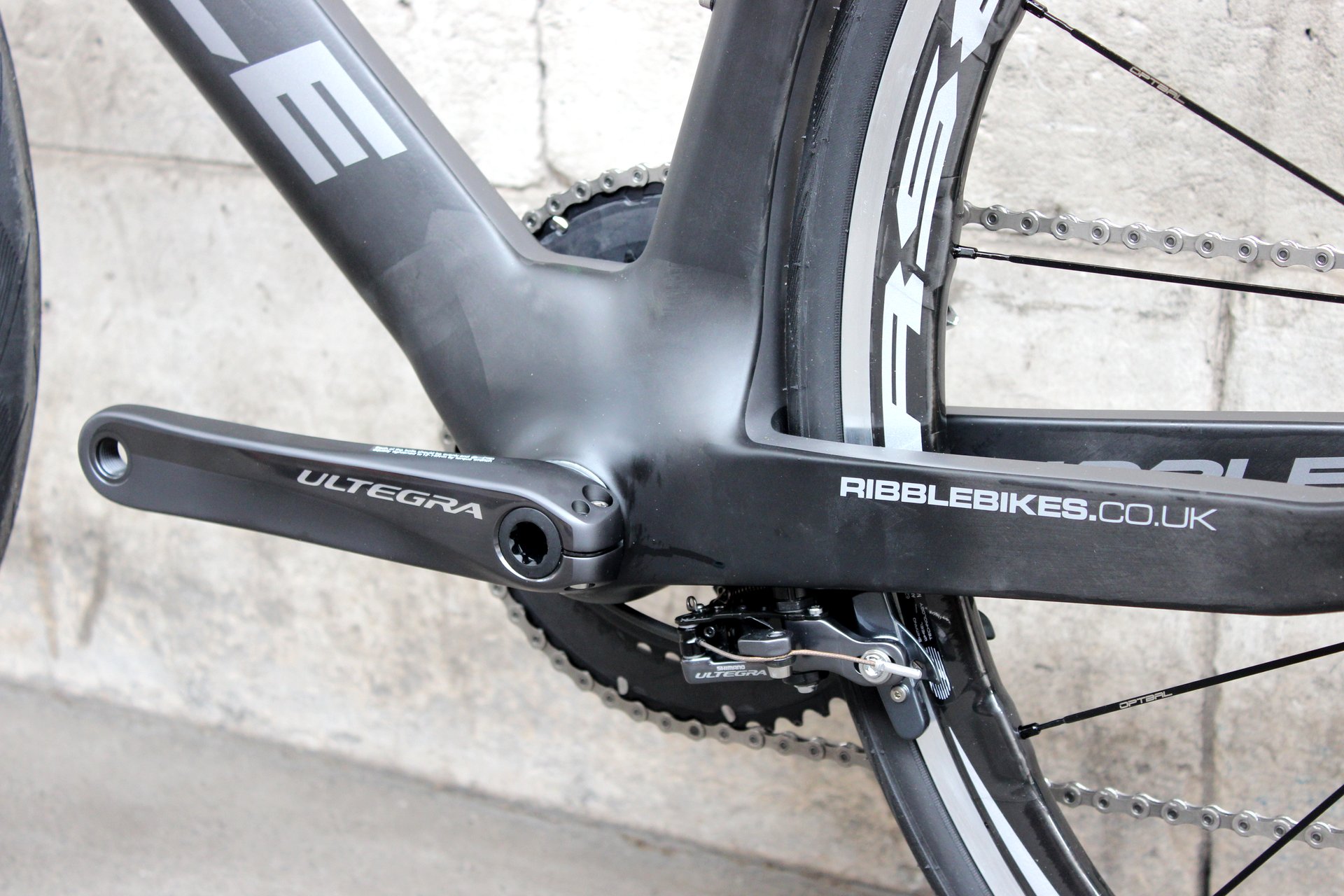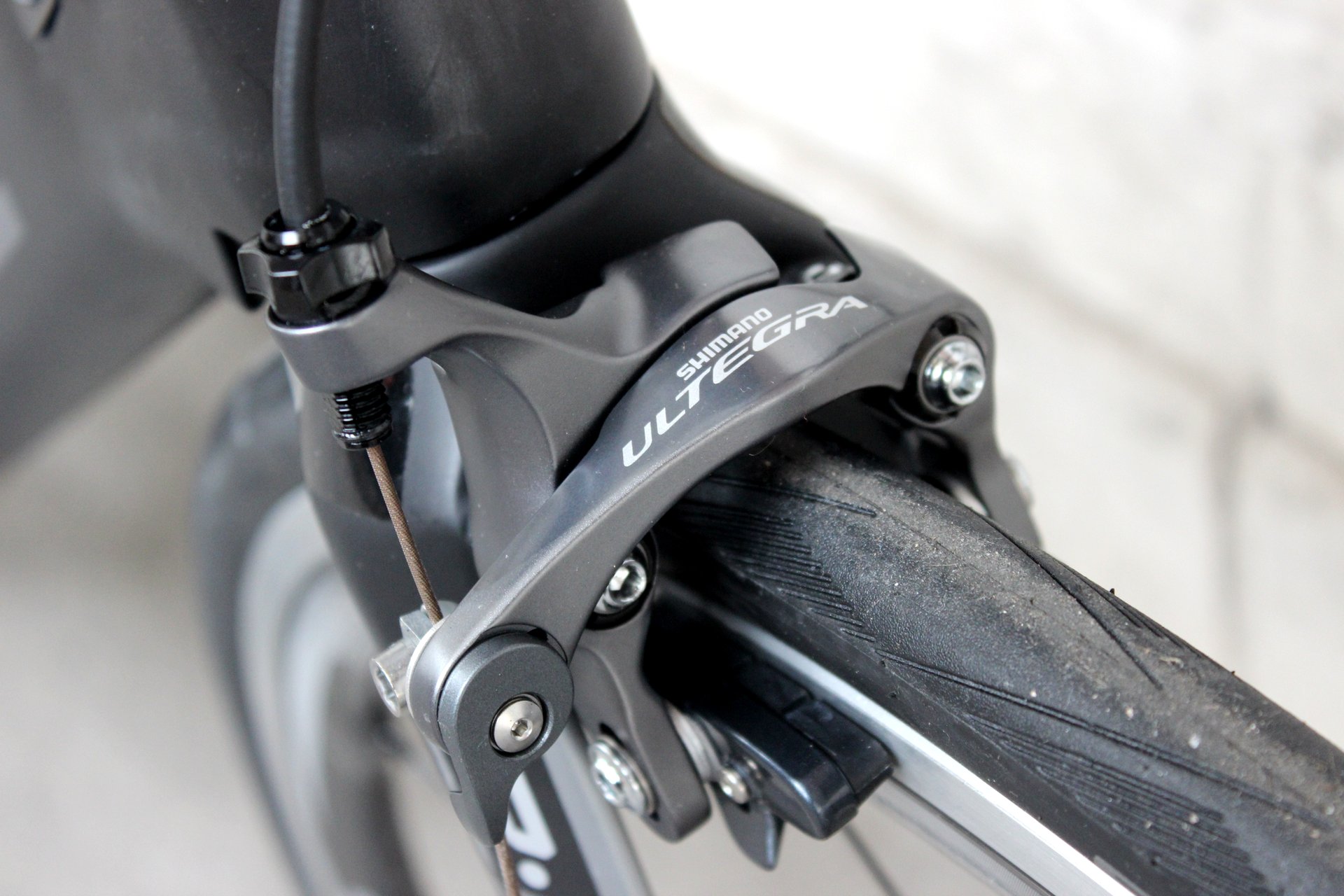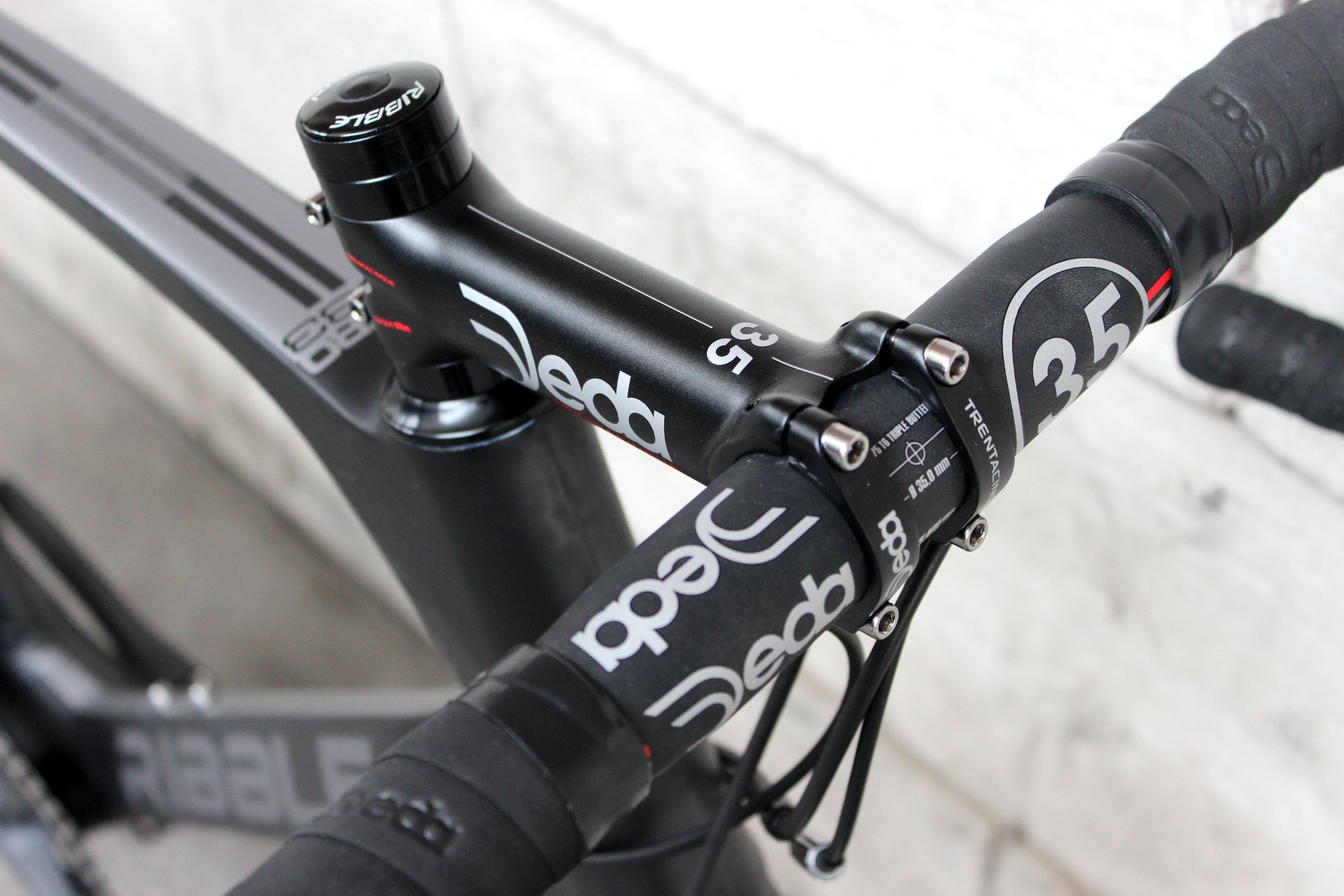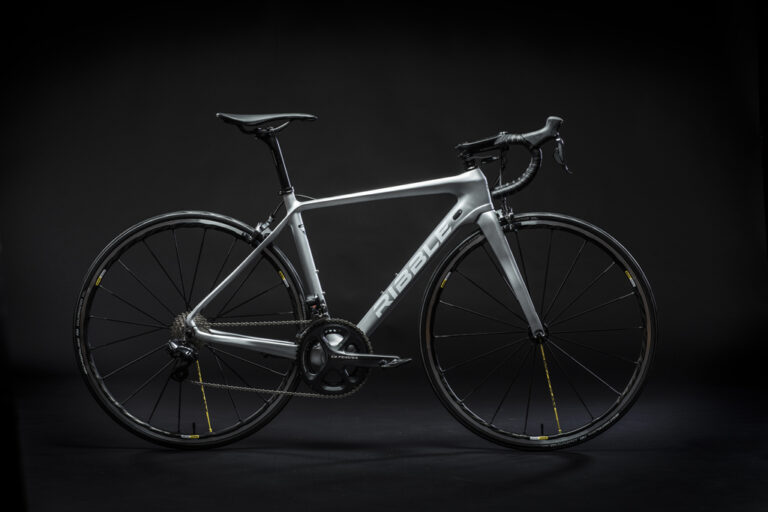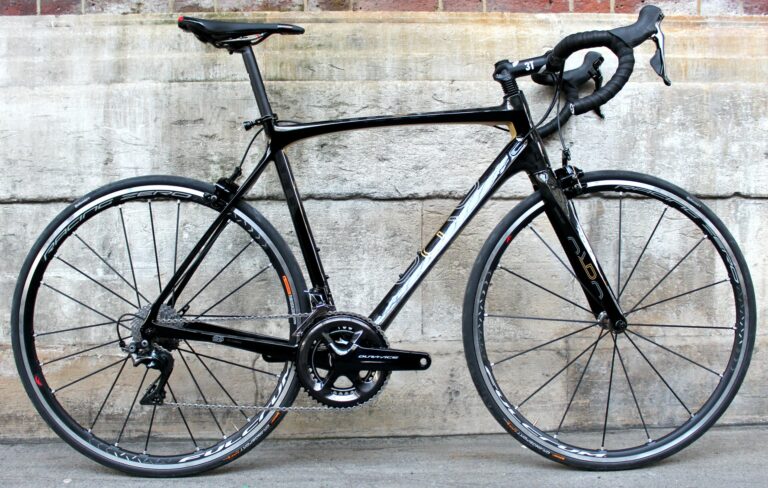-
Specification
- Price: £2,088.89
- Weight: 7.7kg
- Sizes: 51cm, 54cm, 56cm, 58cm
- Size tested: 58cm
- Website: Ribble Cycles
The Aero 883 is Ribble’s full-carbon, aerodynamic road frame, designed in conjunction with Sheffield’s Performance Engineered Solutions. It features tubes of varying profiles and sizes, internal cable routing for the mechs and rear brake, and direct-mount calipers, with the rear unit hidden behind the bottom bracket shell. It’s a sleek, good-looking chassis with the sort of flat sides and sharp edges you might see on a stealth fighter. Ribble doesn’t provide any performance data for the Aero 883, so how it stacks up aerodynamically against the competition is unknown, but if appearances are anything to go by, it’s a decent foundation upon which to build.
The 883 was gradually tailored into my idea of a perfect partner using Ribble’s online bike builder. The frame was specced up with an 11-speed Shimano Ultegra groupset (53-39t chainrings and 12-25t cassette), a Fizik Arione saddle, Deda Trentacinque bars and stem, and Shimano RS81 wheels shod with 25mm Schwalbe Durano tyres for a final price of £2,088.89.
All of which is very nice kit and, on paper, was certainly enough to appeal to my head. But would it be able to win my heart when we finally met?
Love at first sight?
Unboxing the Aero 883 or, if you prefer, lifting the veil on it, is an exciting moment. First impressions, on the whole, are encouraging – it looks to be a classy, carefully sculpted frame with tight clearances between the front wheel and downtube, and rear wheel and seattube.
But it’s not without a few quirks. The first is on the seatstays. With the rear brake hidden behind the bottom bracket shell, the seatstays have nothing to carry and without a bridge to link them appear to be spaced very far apart.
Then there’s the seatpost clamp, which is probably the oddest design anyone’s ever come up with. Instead of a typical collar or internal wedge, the clamp on the Aero 883 relies on a vertically aligned plate inside the seattube which sandwiches the seatpost against the back of the tube’s wall. It’s an unconventional idea that does a very good job of holding the seatpost in place (there was no slippage throughout the entire test period despite a lack of carbon fibre grip gel) but it creates a couple of problems.
